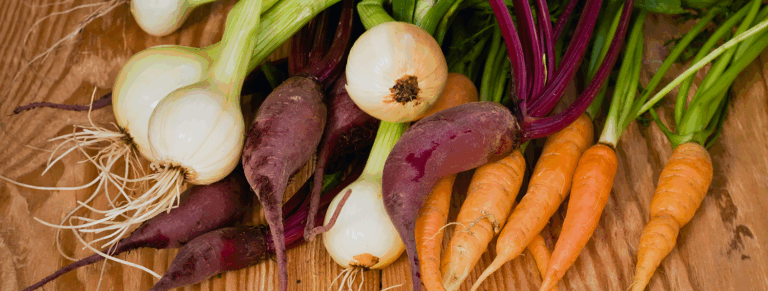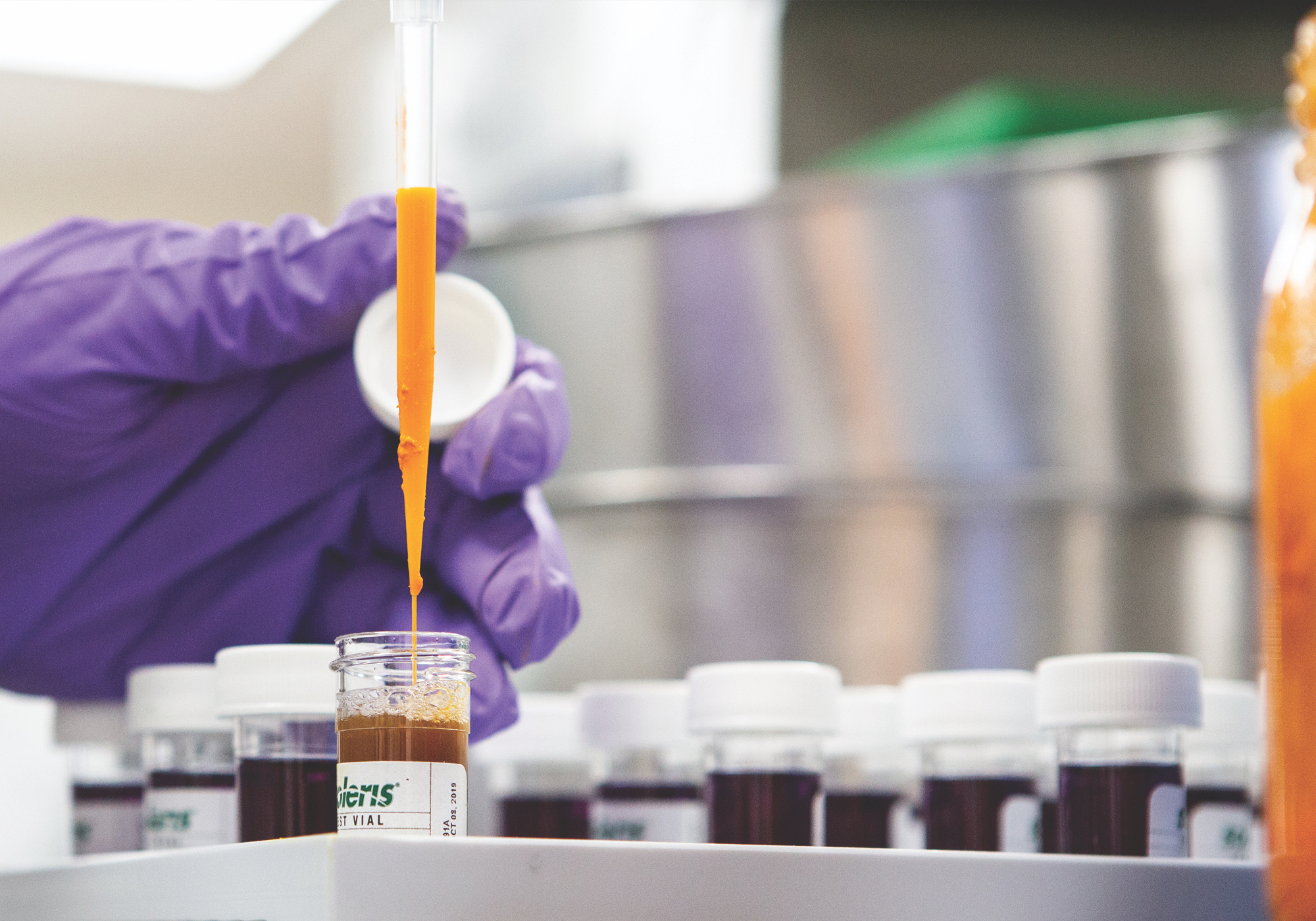Scientific name:Andrographis paniculata Common name:Andrographis, Kalmegh, “King of the bitters”
Constituents:
- Diterpenoid lactone aglyclones collectively referred to as andrographolides and their glycosides (such as neoandrographolide and andrographiside).
- Diterpene dimers
- Flavonoids
Medicinal Actions:
- Anti-inflammatory
- Antioxidant
- Antimicrobial (bacteria, viruses, and some parasites)
- Anti-pyretic
- Bitter
- Choleretic
- Hepatic & Hepatoprotective
- Hypoglycemic
- Immunomodulator & stimulant
Traditional Use:
- In Ayurvedic medicine is used to increase appetite, strengthen digestion and for addressing diabetes, general debility, and hepatitis.
- In traditional Chinese medicine is regarded as bitter and energetically ‘cold’, and thus ideally suited to treating ‘hot’ conditions, or short-term immune system challenges (e.g. throat infections, cough, influenza with fever, skin disorders and snake bite or combined with warming herbs (such Ginger or Holy Basil) if used as more long-term, preventative treatment.
Evidence Based Use:
- Andrographis appears to support a healthy immune response through modulation of various immune pathways, particularly when strong and immediate immune support is required but may also have benefit when used long-term.
- Andrographis has been evaluated in many clinical trials, alone and in combination with other herbs for addressing upper respiratory tract challenges such as the common cold, influenza, acute sinusitis, pharyngotonsillitis, and for the prevention of common colds and urinary tract infections.1-8 It has frequently been shown to reduce the severity and duration of symptoms of infection, speed recovery time, and help reduce the likelihood of bacterial or viral infection.
- Has been shown to support and maintain normal body temperature in an herbal combination product in patients with Familial Mediterranean Fever9
- Has demonstrated similar efficacy to conventional treatment in retaining remission and improving symptoms in patients with ulcerative colitis10,11
- Was shown to significantly reduce fatigue in patients with relapsing-remitting multiple sclerosis receiving interferon beta in comparison to placebo over the course of a year12
Mechanism of Action + Pharmacology:
- Diterpenoid lactones collectively referred to as andrographolides and their glycosides (such as neoandrographolide and andrographiside) appear most responsible for therapeutic effects.
- Isolated andrographolide and whole extract has been shown to significantly stimulate both innate and adaptive immune responses in various animal models.13 Other studies at similar dose ranges have shown a downregulation of immune responses both in vitro and in vivo, and significant reduction in the severity of experimentally-induced autoimmunity in mice.14 Extrapolations from the research point towards Andrographis having an overall immunomodulatory effect.
- Andrographolide has shown hepatoprotective effects similar or greater to silymarin, and can improve levels of glutathione, superoxide dismutase in mice with chemically-induced liver toxicity when taken orally.15-17
- Andrographolide has been shown to decrease inflammation through the inhibition of NF-κB, and function as a Nrf2 activator that regulates the expression of various detoxification enzymes and antioxidant proteins, thus having potential cytoprotective and anti-cancer effects.18
- Andrographolide has been shown to have choleretic effects (increase bile flow) in a dose-dependent manner in animal models.19
- Anti-inflammatory activity of andrographolides may be due in part to the promotion of ACTH (adrenocorticotrophic hormone) and consequent enhancement of adrenocortical function.20 Both A. paniculata extracts and pure andrographolide have been reported to possess adaptogenic properties, having beneficial effects on stress-induced physiological responses in mice.21
- Andrographolides have been shown to inhibit PAF-induced platelet aggregation in vitro22
Safety + Toxicity Concerns:
- Avoid in pregnancy & lactation due to unknown effects
- Adverse effects (skin rash, gastric upset, loss of appetite, decreased taste and dry tongue) possible at higher doses23
Interactions:
- Use caution with insulin and hypoglycemics due to possible additive effects
- Theoretical additive effects with anti-platelet and anti-coagulant medications
Theoretical antagonistic effects with immunosuppressant medications.
References
- Poolsup, N., Suthisisang, C., Prathanturarug, S., Asawamekin, A., & Chanchareon, U. (2004). Andrographis paniculata in the symptomatic treatment of uncomplicated upper respiratory tract infection: systematic review of randomized controlled trials. Journal of clinical pharmacy and therapeutics, 29(1), 37–45.
- [1] Coon, J. T., & Ernst, E. (2004). Andrographis paniculata in the treatment of upper respiratory tract infections: a systematic review of safety and efficacy. Planta medica, 70(4), 293–298.
- Muangman, V. et al. (1995). The usage of Andrographis paniculata following Extracorporeal Shock Wave Lithotripsy (ESWL). Journal of the Medical Association of Thailand = Chotmaihet thangphaet, 78(6), 310–313.
- Majumdar, M. et al. (2020). In vitro anti-biofilm activity of 14-deoxy-11,12-didehydroandrographolide from Andrographis paniculata against Pseudomonas aeruginosa. Brazilian journal of microbiology : [publication of the Brazilian Society for Microbiology], 51(1), 15–27.
- Gabrielian, E. et al. (2002). A double blind, placebo-controlled study of Andrographis paniculata fixed combination Kan Jang in the treatment of acute upper respiratory tract infections including sinusitis. Phytomedicine : international journal of phytotherapy and phytopharmacology, 9(7), 589–597.
- Caceres, D. et al. (1997). Prevention of common colds with Andrographis paniculata dried extract. A pilot double blind trial. Phytomedicine, 4(2), 101-104.
- Melchior, J., Palm, S., & Wikman, G. (1997). Controlled clinical study of standardized Andrographis paniculata extract in common cold—a pilot trial. Phytomedicine, 3(4), 315-318.
- Saxena, R. et al (2010). A randomized double blind placebo controlled clinical evaluation of extract of Andrographis paniculata (KalmCold™) in patients with uncomplicated upper respiratory tract infection. Phytomedicine, 17(3-4), 178-185.
- Amaryan, G. et al. (2003). Double-blind, placebo-controlled, randomized, pilot clinical trial of ImmunoGuard–a standardized fixed combination of Andrographis paniculata Nees, with Eleutherococcus senticosus Maxim, Schizandra chinensis Bail. and Glycyrrhiza glabra L. extracts in patients with Familial Mediterranean Fever. Phytomedicine : international journal of phytotherapy and phytopharmacology, 10(4), 271–285.
- Sandborn, W. et al. (2013). Andrographis paniculata extract (HMPL-004) for active ulcerative colitis. The American journal of gastroenterology, 108(1), 90–98. https://doi.org/10.1038/ajg.2012.340
- Tang, T. et al (2011). Randomised clinical trial: herbal extract HMPL-004 in active ulcerative colitis – a double-blind comparison with sustained release mesalazine. Alimentary pharmacology & therapeutics, 33(2), 194–202.Bertoglio, J. et al. (2016). Andrographis paniculata decreases fatigue in patients with relapsing-remitting multiple sclerosis: a 12-month double-blind placebo-controlled pilot study. BMC neurology, 16(1), 1-8.
- Puri, A. et al. (1993). Immunostimulant agents from Andrographis paniculata. Journal of Natural products, 56(7), 995-999.
- Iruretagoyena, M. I. et al. (2005). Andrographolide interferes with T cell activation and reduces experimental autoimmune encephalomyelitis in the mouse. Journal of Pharmacology and Experimental Therapeutics, 312(1), 366-372.
- Visen, P et al. (1993). Andrographolide protects rat hepatocytes against paracetamol-induced damage. Journal of Ethnopharmacology, 40(2), 131-136.
- Kapil, A. et al (1993). Antihepatotoxic effects of major diterpenoid constituents of Andrographis paniculata. Biochemical Pharmacology, 46(1), 182-185.
- Trivedi, N. et al (2007). Hepatoprotective effect of andrographolide against hexachlorocyclohexane-induced oxidative injury. Integrative cancer therapies, 6(3), 271–280.
- Wong, D. et al. (2018). Regulation of the NRF2 transcription factor by andrographolide and organic extracts from plant endophytes. PloS one, 13(10), e0204853.
- Shukla, B. et al (1992). Choleretic effect of andrographolide in rats and guinea pigs. Planta medica, 58(2), 146–149.
- Mills, S., & Bone, K. (2000). Principles and practice of phytotherapy. Modern herbal medicine. Churchill Livingstone, pg. 364.
- Thakur, A. et al. (2015). Adaptogenic potential of andrographolide: An active principle of the king of bitters (Andrographis paniculata). Journal of traditional and complementary medicine, 5(1), 42-50.
- Burgos, R. et al. (2005). 14-deoxyandrographolide as a platelet activating factor antagonist in bovine neutrophils. Planta medica, 71(7), 604–608.
- Gardner, Z., & McGuffin, M. (Eds.). (2013). American Herbal Products Association’s botanical safety handbook. CRC press.







